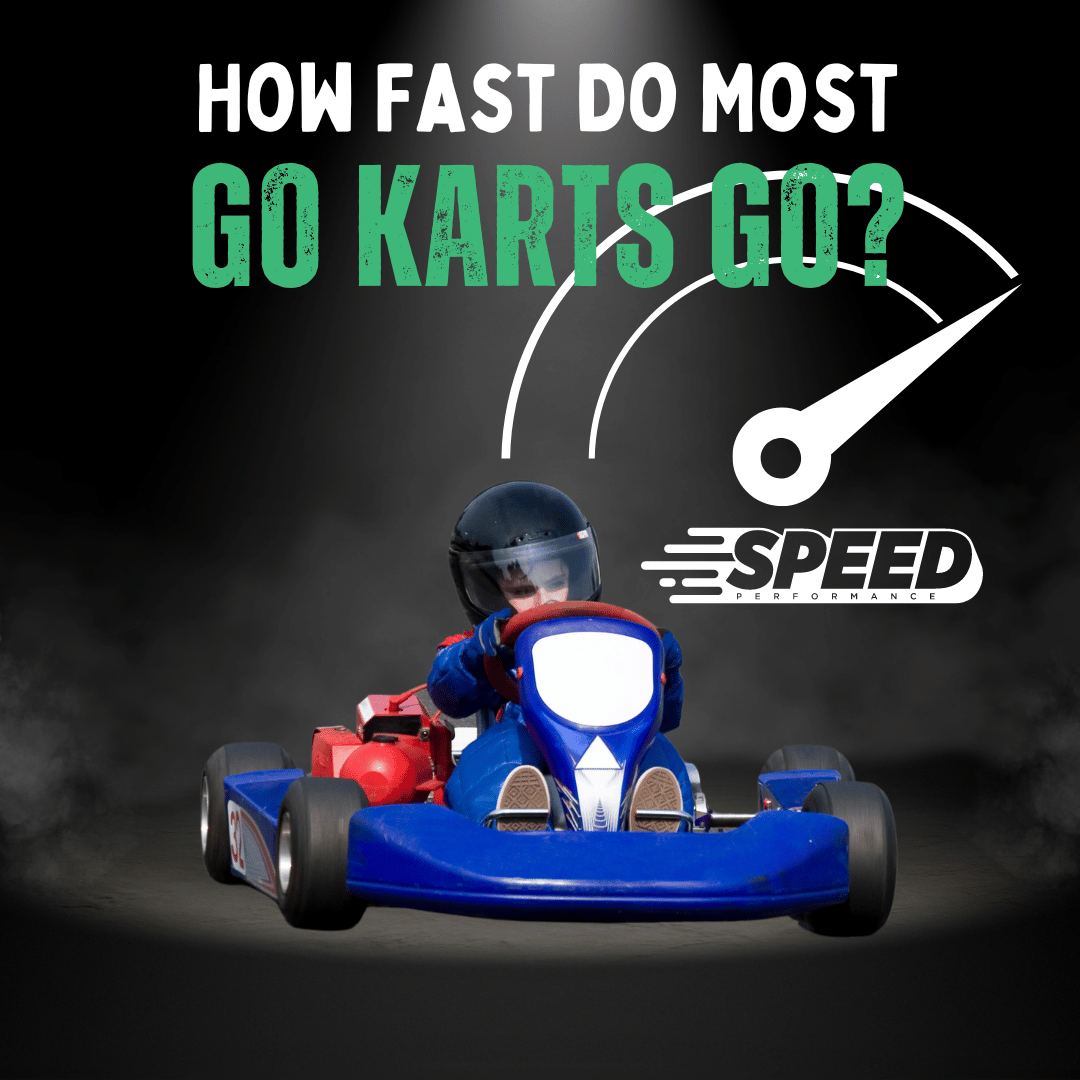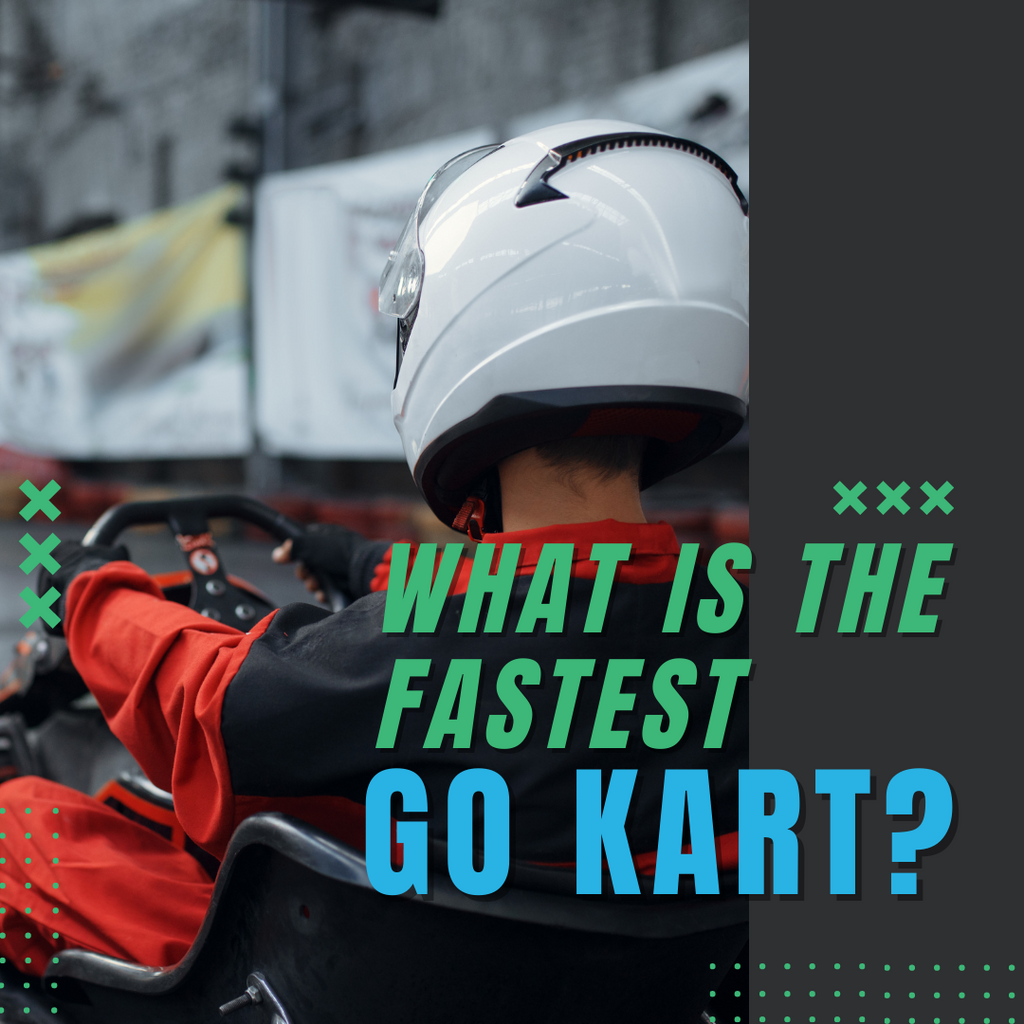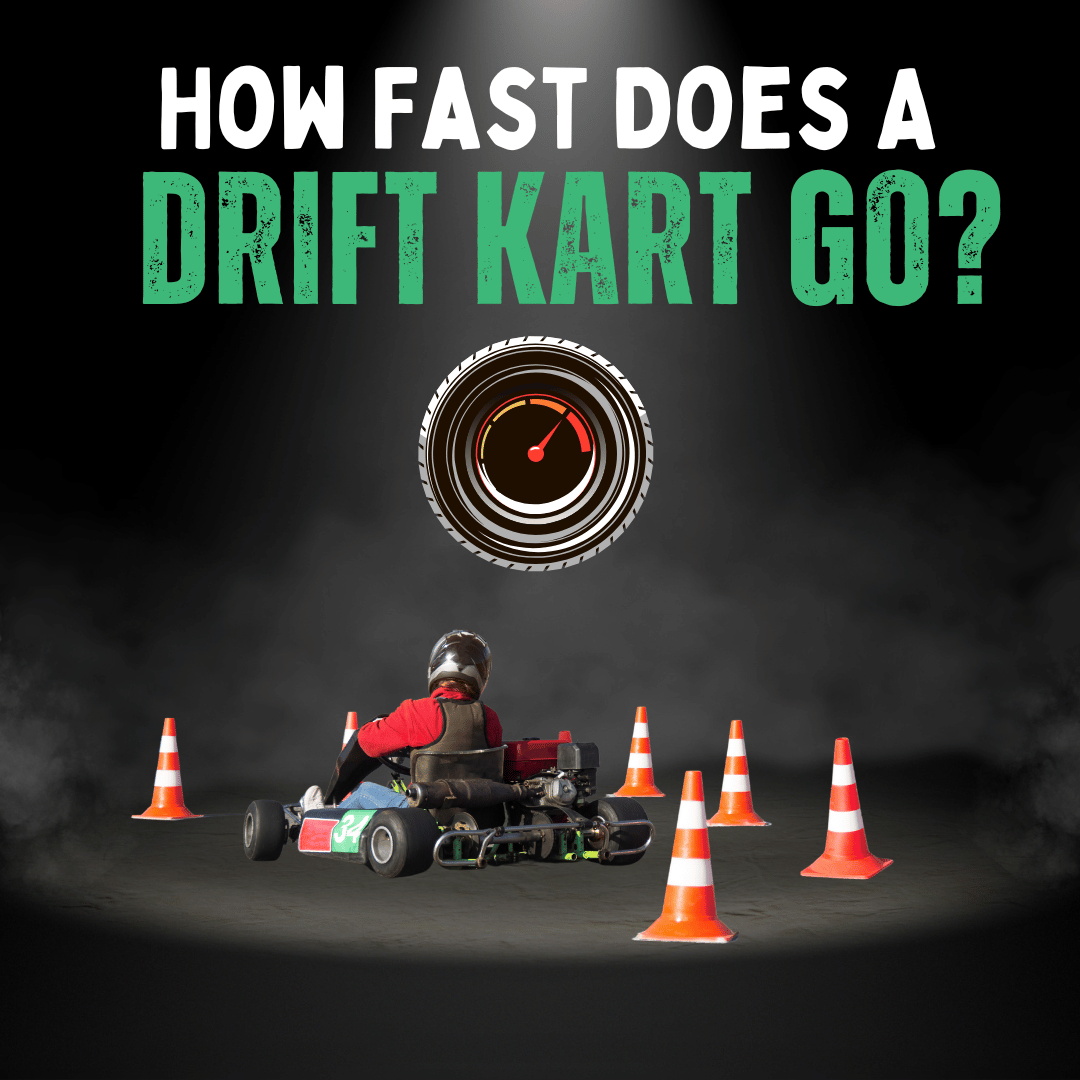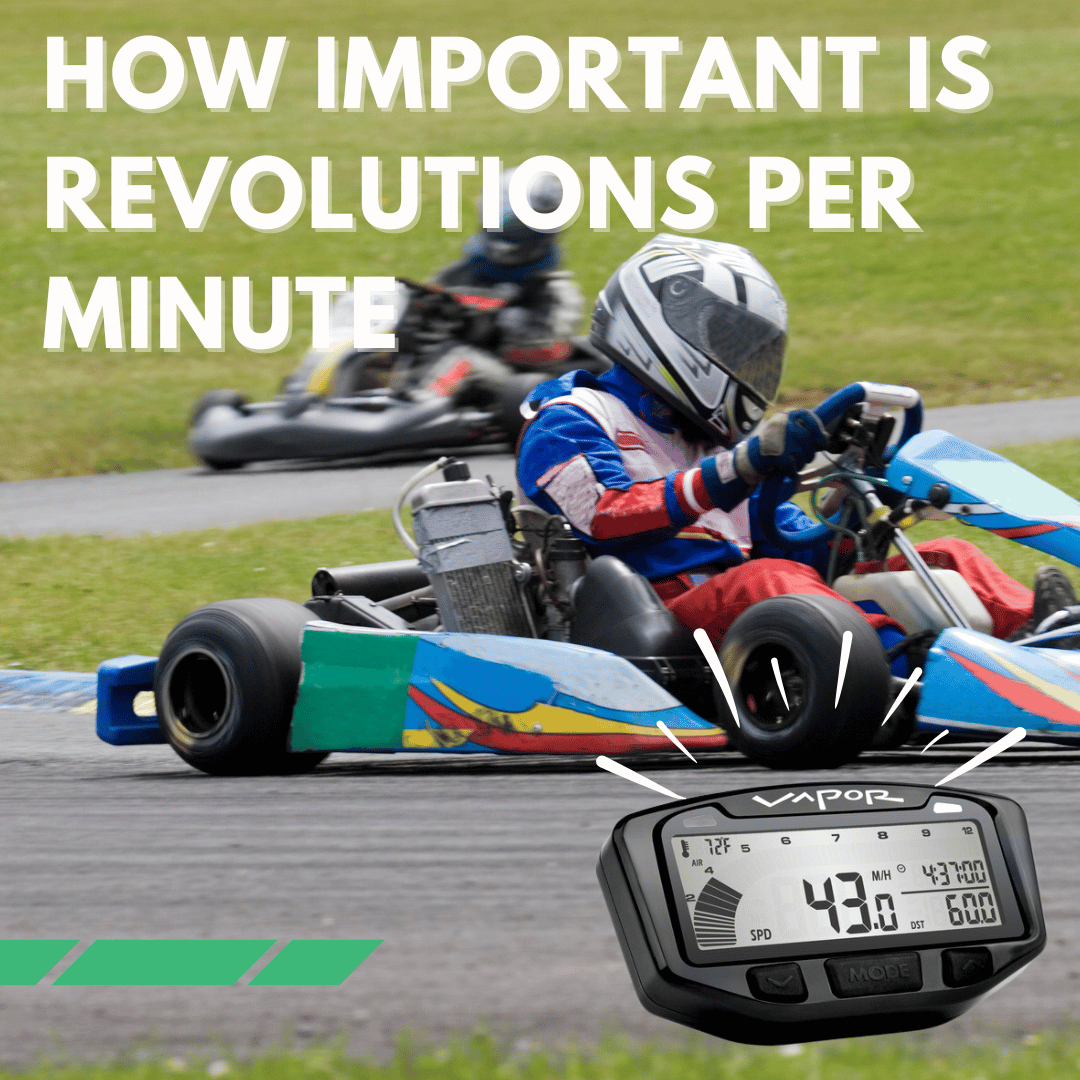Published: 10.8.23
Updated: 4.9.24
Have you ever watched your grandchild or child zoom past on their ride-on toy and wondered about the thrill of speed?
Perhaps you've pondered how fast those little machines can actually go. 
If you're specifically curious about electric go-karts, you might be interested in how fast electric go-karts go.
Well, if go-karts have caught your eye, you're in for a treat.
Especially when you consider the difference in speed between electric and petrol go-karts.
Let's dive into the world of go-karts and uncover the mystery behind their speed.
Go-karts' speed varies based on their cc rating, which determines the air and gasoline mix. Karts with 50 cc can achieve speeds up to 35 mph. Those with 125 cc can hit between 70 and 80 mph. Meanwhile, high-powered 250 cc karts can soar to a staggering 150 mph.
The Thrill of Speed: Understanding Go Kart Dynamics
Go-karts, those small yet powerful machines, have been a source of excitement for many, from toddlers to teenagers and even adults. But what makes them so exhilarating?
The answer lies in their speed.
Factors Influencing Go Kart Speed
Several elements come into play when determining the top speed or maximum velocity of a go-kart.
Let's delve deeper...
Engine Size and CC Rating
The heart of a go-kart, its motor or powerplant, plays a pivotal role in its speed.
The 'cc' stands for cubic centimetres and refers to the engine's size.

Whether it's a petrol-powered, or an electric, battery-powered e-kart, the propulsion system's capacity determines its pace.
For those who are curious about the fastest go-karts, you can read about the fastest go-karts available.
A 50 cc kart, for instance, can achieve a rapidity of up to 35 mph. Upgrade that to a 125 cc kart, and you're looking at a swiftness of 70 to 80 mph.
And for those seeking the peak pace, a 250 cc kart with an internal combustion engine can push the boundaries with speeds up to 150 mph.
But it's not just about raw speed; the science of go-karting plays a significant role in these impressive figures.
Weight and Aerodynamics
It's not just about the engine. The kart's mass or heaviness and its aerodynamic design play a significant role in its velocity.
A lighter kart with a streamlined chassis can cut through the air more efficiently, leading to higher speeds.
Race Category and Regulations
Go-karts used in professional races might differ from those at your local track.
Different engines and regulations for varied race categories can influence the top speed a kart can achieve.
The Role of the Driver and Track Conditions

While the machine's specs are crucial, the driver's skill and the track's conditions can't be ignored.
A seasoned driver might be able to manoeuvre the kart to its peak pace, while a novice might be more cautious.
Similarly, a wet track or one with many turns might not allow for maximum velocity.
Moreover, the type of kart, whether it's an electrified kart or one with an internal combustion engine, can also influence its performance on different tracks.
The speed of a drift kart, for instance, can vary based on these factors.
Understanding Karting Acceleration
While the top speed is a significant determinant, understanding how quickly a kart can accelerate or hasten is equally crucial.
Acceleration, or the act of speeding up, depends on the kart's horsepower, its bulk, and engine type.
A kart with higher horsepower will typically have better quickening, allowing it to reach its highest rate faster.
Related: How Fast Do Pedal Go Karts Go?
Karting vs. Racing
Many might wonder how karting, with racing karts or karting vehicles, compares to other forms of racing.
While go-karts or go-carts might not reach the tempos of Formula 1 cars, the thrill and technique required can be just as intense.
The dynamics of karting, especially on a racetrack like Tampa Bay Grand Prix, offer a unique racing experience, making it a favourite among many motorsport enthusiasts.
Different Track Types and Their Impact

Not all karting tracks, like the renowned Tampa Bay GP, are the same.
From slick tracks to rally-type terrains, the type of racetrack can influence the kart's speed.
Slick tracks, for instance, might allow for higher tempos due to their smooth surface, while rougher tracks might reduce the kart's top speed due to increased resistance.
Safety First: Speed Isn’t Everything
As thrilling as speed can be, safety should never take a backseat. Especially when it comes to kids and teenagers.
The chassis or framework of the kart plays a significant role in ensuring safety.
A robust frame can protect the driver during any unforeseen accidents.
The Importance of Skill and Training
A go-kart's top speed or highest rate doesn't mean it should always be driven at that tempo.
The driver's skill level plays a significant role. Proper training ensures that the driver can handle the kart safely, even at high speeds.
Whether it's understanding the intricacies of an e-kart or mastering the acceleration of a gasoline-fueled kart, training is paramount.
Ensuring Safe Speeds for Kids and Teenagers
For our young ones, it's essential to ensure that the speed is appropriate for their age and skill level.
While they might be eager to push the limits, it's our responsibility to ensure they're safe.
One crucial factor to consider is the importance of revolutions per minute (RPM) for go-karts when determining safe speeds.
Conclusion: The Need for Speed and Safety
Go-karts offer an exhilarating experience, with speeds that can rival some cars on the road.
However, it's essential to balance the thrill of speed with the importance of safety, especially when it comes to our kids and grandkids.
After all, the joy of watching them have fun is unmatched, but so is the peace of mind knowing they're safe.
FAQs
What is the average speed of a go-kart designed specifically for kids?
Go-karts designed for kids typically have a lower speed range for safety reasons. On average, children's go-karts can reach speeds of 10 to 25 mph, depending on the engine size and design.
How does the design of a go-kart track influence its achievable speed?
The design of a go-kart track, including its length, width, and the number and sharpness of turns, can significantly influence the speed a kart can achieve. Tighter tracks with more turns usually mean lower average speeds, while longer, straighter tracks can allow for higher speeds.
Are there any speed restrictions for go-karts in the UK?
In the UK, there are specific regulations and guidelines for go-karting, especially for competitive racing. While there isn't a universal speed limit, tracks and events often set their own restrictions based on safety standards and the age group of the participants.
How do the tyres of a go-kart impact its speed?
The size of go-kart tyres plays a pivotal role in its speed. Larger tyres provide more grip because of their expanded contact patch. This enhanced grip, coupled with an optimal kart setup, can lead to increased speeds.
Hey there, savvy shopper! 🛍️
Did you like our article?
If you're itching to dive deeper or have any niggling questions about kids' ride-on toys, don't be shy!
Pop over to RiiRoo.com or give our Live Chat a whirl.
We're all ears and always up for a chinwag!










Share:
Top Go-Kart Strategies to Transform Your Skills in 2025
Why Karting Is A Great Idea For Teenagers